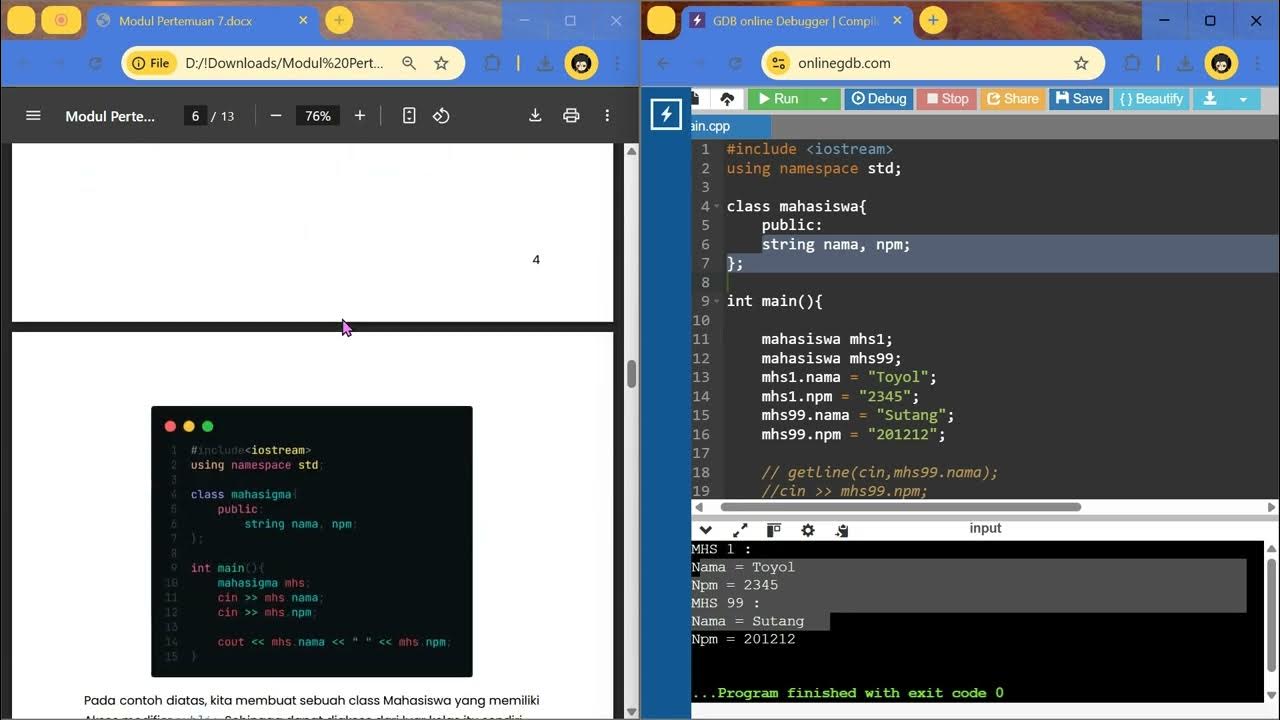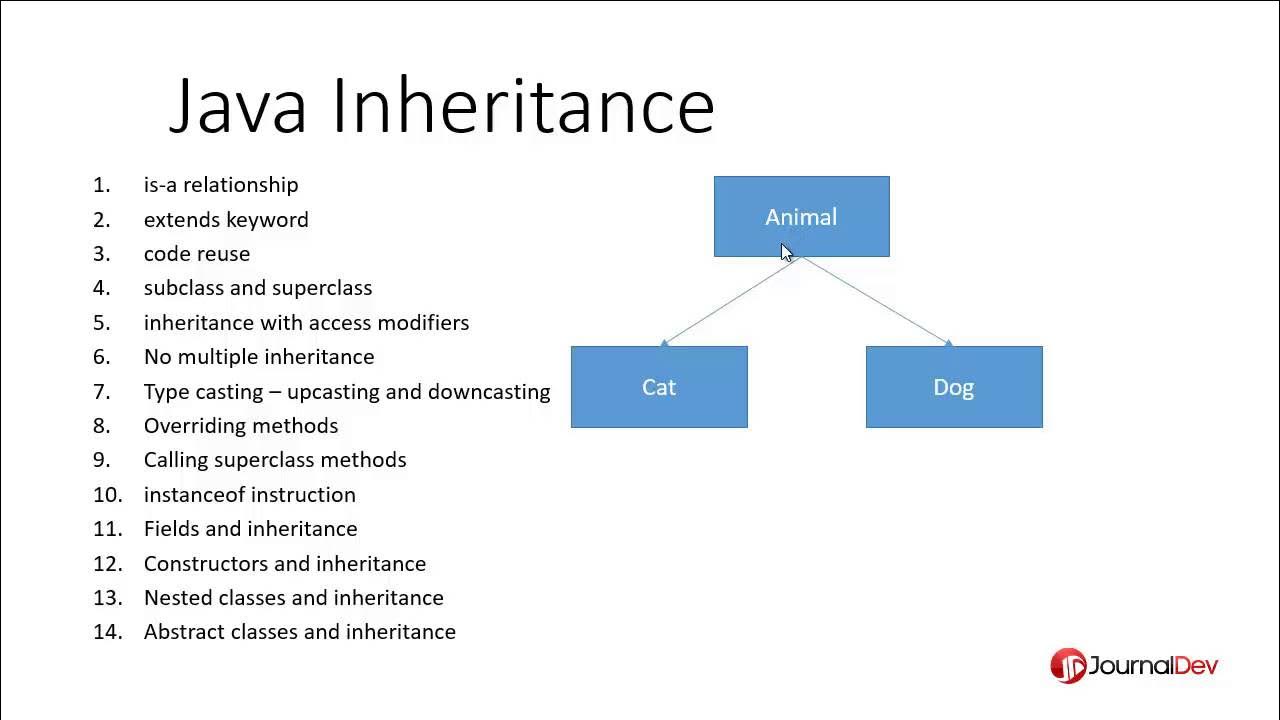Java Tutorial: Access modifiers, getters & setters in Java
Summary
TLDRThe video script discusses the concept of access modifiers in programming, focusing on the chapter nine which explores the roles of different access levels like private, public, and protected. It explains how these modifiers control access to class members and provides examples of their usage in code, including setting properties and methods to private access, which restricts access to the class itself, and public access, which allows anyone to use them. The script also touches on the implications of these settings for inheritance and encapsulation, emphasizing the importance of understanding access control in object-oriented programming.
Takeaways
- 😀 The video discusses the concept of access modifiers and constructors in programming, specifically in the context of a chapter nine tutorial.
- 🏷 The script mentions creating a file for video number 150, indicating a series of tutorials or lessons.
- 🔧 It introduces the idea of creating a class, named 'MyApply', and discusses the use of access modifiers like private and public within the class.
- 🔑 The video explains the use of private access modifiers to protect class properties from being directly accessed or modified.
- 📝 The script talks about creating methods within the class, such as 'getAdmin', 'getApplyId', and 'setName', and their respective functionalities.
- 🛠️ The tutorial covers the concept of inheritance and how access modifiers affect the visibility and accessibility of class properties in derived classes.
- 🚫 The video emphasizes the importance of not being able to directly access private properties from outside the class and the need for getters and setters.
- 🔄 It discusses the use of exceptions and validation within the class methods to ensure proper data handling and error management.
- 📐 The script touches on the idea of setting constraints and validation for class properties, such as phone numbers and names, to maintain data integrity.
- 🔍 The video provides examples of how to implement validation checks for phone numbers and other inputs to prevent incorrect data entry.
- 🎓 The tutorial concludes with a note on the importance of understanding access modifiers for better class design and data encapsulation in object-oriented programming.
Q & A
What is the main topic of the video script?
-The main topic of the video script is about access modifiers and constructors in programming, specifically focusing on the chapter nine of a course or tutorial series.
What is the significance of the number '100' mentioned in the script?
-The number '100' is mentioned as the video number in the series, indicating that this is the 100th video in the tutorial series.
What does the script refer to when it mentions 'CWHO' and 'public wide'?
-The script refers to creating classes or methods with specific access modifiers. 'CWHO' likely refers to a class name, and 'public wide' could be a term used to describe a public access modifier, allowing wide access to the class or method.
What is the purpose of creating a 'LikeClass' in the script?
-The 'LikeClass' is created to demonstrate the concept of access modifiers in programming. It serves as an example to illustrate how different parts of a program can access its properties and methods.
What is the role of 'interdistname' in the script?
-The term 'interdistname' seems to be a placeholder or a variable name used in the script to represent a concept of inheritance or access to properties from another class.
What does the script mean by 'property on battery' and 'wire property of additive'?
-These phrases are likely metaphors or technical terms used to explain how properties are accessed or manipulated within a class, possibly in the context of object-oriented programming.
How does the script differentiate between 'private' and 'public' access modifiers?
-The script explains that 'private' access modifiers restrict access to the class's properties and methods, while 'public' allows for wider access, which can be used when inheritance is involved or when accessing properties from another class.
What is the importance of 'template glass' in the context of the script?
-The 'template glass' could be a metaphor or a specific term used to describe a template or a pattern used in programming to create classes or methods with certain properties, such as access modifiers.
What does the script suggest when it talks about 'rear seat 125' and 'happy birthday wish'?
-These phrases seem to be examples or scenarios used in the script to illustrate how certain programming concepts, like access modifiers, can be applied in different situations or used to handle data.
How does the script explain the concept of 'direct access' to properties?
-The script explains that direct access to properties is not possible when certain access modifiers like 'private' are used. It suggests that direct access can only be achieved through specific methods or constructors provided by the class.
Outlines

Dieser Bereich ist nur für Premium-Benutzer verfügbar. Bitte führen Sie ein Upgrade durch, um auf diesen Abschnitt zuzugreifen.
Upgrade durchführenMindmap

Dieser Bereich ist nur für Premium-Benutzer verfügbar. Bitte führen Sie ein Upgrade durch, um auf diesen Abschnitt zuzugreifen.
Upgrade durchführenKeywords

Dieser Bereich ist nur für Premium-Benutzer verfügbar. Bitte führen Sie ein Upgrade durch, um auf diesen Abschnitt zuzugreifen.
Upgrade durchführenHighlights

Dieser Bereich ist nur für Premium-Benutzer verfügbar. Bitte führen Sie ein Upgrade durch, um auf diesen Abschnitt zuzugreifen.
Upgrade durchführenTranscripts

Dieser Bereich ist nur für Premium-Benutzer verfügbar. Bitte führen Sie ein Upgrade durch, um auf diesen Abschnitt zuzugreifen.
Upgrade durchführen5.0 / 5 (0 votes)






